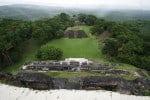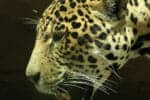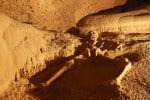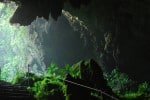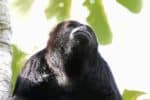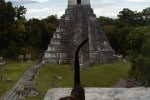In the past jungles conjured nightmarish images of dark, threatening places with impenetrable vegetation and dangerous, stealthy creatures lurking in the shadows, ready to suddenly strike. Think of Joseph Conrad’s, “The horror! The horror!” in Heart of Darkness. My recent hike in the rainforest seemed anything but this.
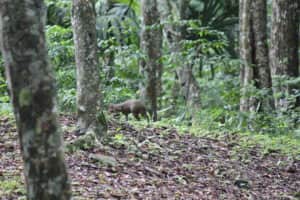
On a bright, sunny afternoon cleared jungle trails led past towering mahogany trees (Swietenia macrophylla), the sacred Cieba trees of the Maya (Ceiba pentandra) and the huge, buttressing roots of strangler figs (Ficus aurea). Butterflies and hummingbirds flitted about wild gingers and Central American heliconias. Agoutis (Dasyprocta), adorable rodents that resemble extra-large guinea pigs, skirted in the underbrush. A crested guan (Penelope purpurascens) perched in a nearby tree cocked its head turning a wary eye on us. Ahead, a battalion of leaf cutter ants balanced oversized greenery as they earnestly marched onward. On the gentle breeze drifted the fresh, damp aroma of lush vegetation.
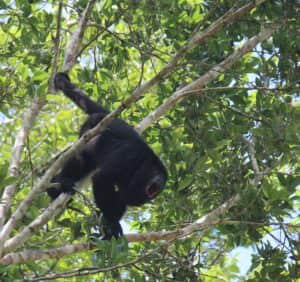
Suddenly, ROAR! I was knocked out of my dreamy intoxication by the gut-wrenching call of a Black Howler Monkey, followed soon after by another howl. Within a minute, the entire forest seemed to resonate with the guttural roars of troops of howler monkeys. Were they identifying their territory? Alerting other animals of a large predator? Simply saying hello?
Black Howler Monkeys (Alouatta pigra) are the largest of Belizean monkeys ranging in size from 22 to 36 in, excluding their tails, which can sometimes reach five times their body length! Native to Central and Central American forests their loud howls can travel three miles through dense rainforest. Howler monkeys have short snouts and wide-set, round nostrils, which help them smell food up to 1.5 miles away. Fans of fruit, flowers, leaves and nuts, their prehensile tails help them while foraging for food in the trees. The monkeys move on the tops of branches grasping with their hands, feet and tails. They have lifespans of 15 to 20 years.
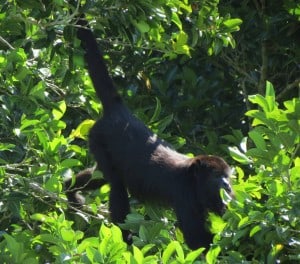
Most howler monkeys live in groups of four to fifteen animals, with one to three males to multiple females. Vocal communication is an important part of their social behavior, with vocalization primarily occurring at dawn and dusk, but periodically throughout the day. Howling is believed to help intergroup spacing and territory guarding, as well as protecting mates. Howler monkeys are considered to be the loudest land animal!
Locally known as “baboons”, howler monkeys are seldom aggressive and pose little threat in the rainforest. However, hunting by humans and habitat destruction are of grave concern to the status of this species. Fortunately, Belize has a healthy population of these primates.
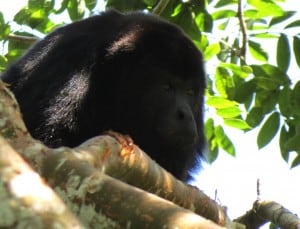
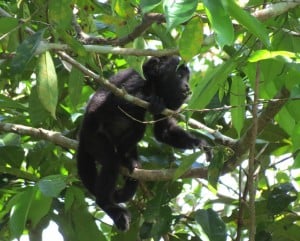
After nearly ten minutes, without warning, the howling stopped. My pounding heart calmed and the quiet leaf rustle and bird chatter returned. All was well in the rainforest.
To possibly see or hear Black Howler Monkeys, try one of these tours: Mayflower Jungle & Waterfall Hike, Cockscomb Basin Wildlife Sanctuary & Jaguar Preserve, Cave & Jungle Adventure, Magical Mayan History Tour, Monkey River Adventure, Tikal and Actun Tunichil Muknal (ATM Cave).
